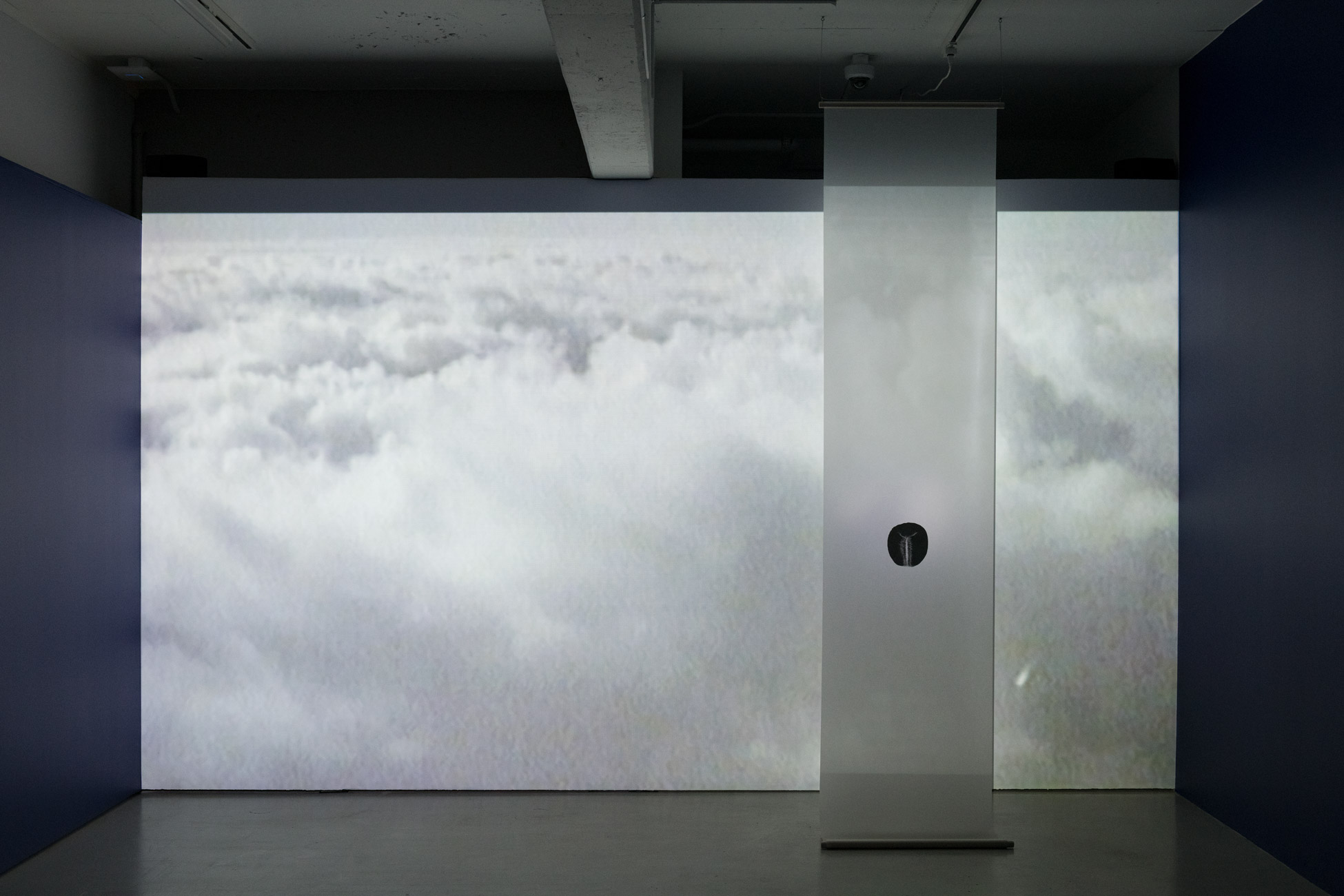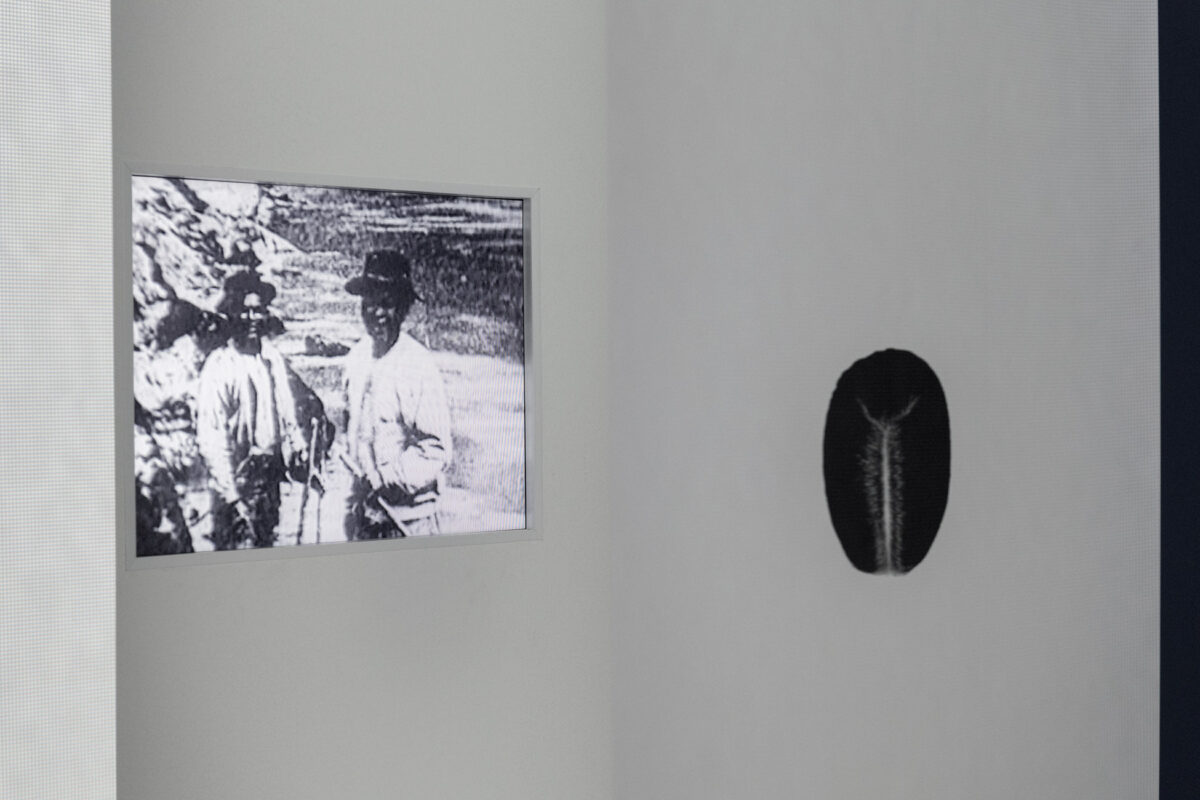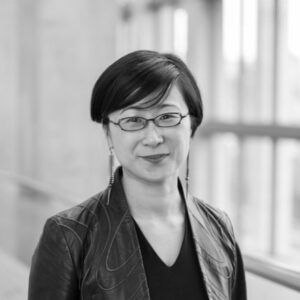between departure and arrival 1997

Jin-me Yoon, Installation view of between departure and arrival, 1997
Two-channel video installation, print on mylar scroll, dimensions variable, 9:51
Photograph by Paul Litherland / Musée d’art de Joliette, 2019
Jin-me Yoon’s first exhibited work to incorporate video and audio, between departure and arrival is a room-sized installation. First shown at Vancouver’s Western Front artist-run centre in 1997, it was also Yoon’s departure from projects that critique social constructions of national identity primarily through visible markers of race, such as Souvenirs of the Self, 1991, and A Group of Sixty-Seven, 1996. It marked her entry into a practice that addresses time, history, and memory—consciousness—through an aesthetics of displacement that explores the experience of occupying multiple languages, cultures, and locations at once.

The work consists of four parts. The entry to the installation space is marked by clocks: two clocks when it was installed in Vancouver, and three when installed elsewhere, to signal entangled time schemes—for instance, Seoul, Vancouver, and Toronto in the case of the 1997 show at the Art Gallery of Ontario. A video of clouds, taken from an airplane whose window is occasionally visible, fills the back wall of the installation, in front of which hangs a mylar scroll printed with an image of the top of a Korean woman’s head, her hair hanging in two strands, split down the middle. Hidden behind the scroll is a small video screen displaying a collage of historical footage depicting Asian immigrants to Canada and the events that displaced and controlled their movements: the construction of the Canadian National Railway in the late 1800s, which relied on Chinese labourers; a Chinese head tax certificate (c.1885–1923); scenes of the West Coast fishing industry, which brought Japanese fishermen to Canada; images of Japanese internment in British Columbia during the Second World War; and the Korean War (1950–1953).
The succession of videos becomes a palimpsest of memories carried and difficult histories that extend into the present. Yoon ends the sequence with a view from the back seats of taxis being driven through the streets of Vancouver and Seoul, as if she is trailing the camera behind her as she navigates present realities. A female voice-over accompanies the video collage:
She was mid-sentence, mid-flight, somewhere over the Pacific. She felt this familiar, peculiar sensation, as if her body were splitting apart. Apart. Straight down the middle, the way her grandmother wore her hair. Split, like the country of her birth. Wound. All detached at the navel, but not the same. Not all torn, ripped and scattered. She, with her broken tongue. Scar. Marking north. Marking south. 38th Parallel.
Speaking. Speaking of this slash. She. The violence of this/that, either/or, us/them, subject/verb/object. She. A dwelling between a here, a there.
Yoon unites two types of mobility—the global nomad (time zone clocks, airplanes) and the diasporic subject (difficult histories, splitting, scars); each is layered upon the other, complicating the racialized distinction between expatriate and migrant. Situating the experiences of migration and movement in actual bodies and biographies, between departure and arrival grounds the weightlessness of clouds seen from an airplane in entangled histories, while allowing different forms of mobility to shape consciousness and identities.

 About the Author
About the Author
 More Online Art Books
More Online Art Books
 Acknowledgements
Acknowledgements